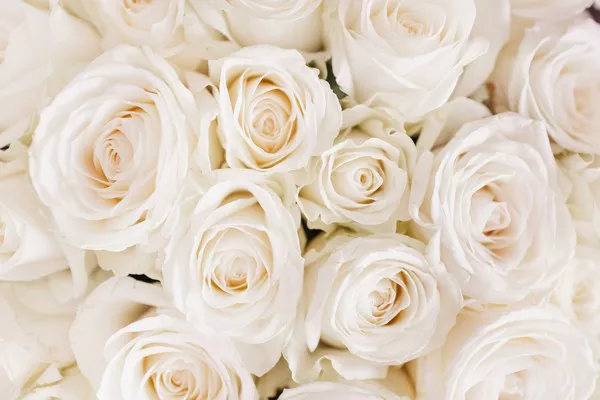The lifespan of roses varies depending on factors such as variety, care, and environment. Generally, cut roses last a few days to a week, while rose bushes can live for several years with proper care.
Roses, with their timeless beauty and captivating fragrance, have long been cherished in gardens and floral arrangements. However, for those who cultivate these beloved blooms, understanding their lifespan and how to extend it is essential. From the delicate cut roses adorning a table to the resilient bushes gracing garden beds, each requires specific care to flourish. In this comprehensive guide, we delve into the factors influencing the longevity of roses and provide expert tips for nurturing these cherished flowers.
Lifespan Variability:
The lifespan of roses can vary significantly based on multiple factors. One of the primary determinants is the variety of rose. Some varieties, such as hybrid tea roses, are known for their shorter lifespan compared to others like shrub roses or floribunda roses. Additionally, the care provided to roses greatly impacts their longevity. Proper watering, pruning, and fertilizing can significantly extend the lifespan of roses, while neglect or improper care can lead to premature wilting and decline.
Environmental conditions also play a crucial role. Roses thrive in locations with ample sunlight, well-draining soil, and adequate air circulation. Factors such as temperature extremes, humidity levels, and exposure to pests and diseases can affect the health and lifespan of roses.
Care Tips:
To maximize the lifespan of roses, diligent care is essential. Here are some expert tips:
Watering: Ensure roses receive consistent moisture, keeping the soil evenly moist but not waterlogged. Water at the base of the plant to avoid wetting the foliage, which can lead to fungal diseases.
Pruning: Regular pruning promotes healthy growth and prolongs the lifespan of roses. Remove dead or diseased branches, as well as spent flowers, to encourage continuous blooming.
Fertilizing: Feed roses with a balanced fertilizer formulated specifically for roses. Apply fertilizer according to package instructions, typically in early spring and again after the first bloom cycle.
Mulching: Apply a layer of organic mulch around the base of rose bushes to conserve moisture, suppress weeds, and insulate roots from temperature fluctuations.
Pest and Disease Management: Monitor roses regularly for signs of pests such as aphids, thrips, or mites, as well as common diseases like powdery mildew or black spot. Promptly address any issues with appropriate treatments to prevent damage.
Cut Roses vs. Rose Bushes:
Cut roses, often used in floral arrangements, have a relatively short lifespan compared to rose bushes. While cut roses can retain their beauty for a few days to a week with proper care, their vitality diminishes rapidly once severed from the plant. In contrast, rose bushes have the potential to live for several years or even decades under favorable conditions. With ongoing care and maintenance, rose bushes can produce abundant blooms year after year, adding enduring beauty to the landscape.
Environmental Factors:
Creating an optimal environment is essential for roses to thrive and reach their full potential. Here are key environmental factors to consider:
Sunlight: Roses require at least six hours of sunlight per day to bloom abundantly. Plant roses in a location with full sun exposure to ensure vigorous growth and prolific flowering.
Soil: Choose well-draining soil with a slightly acidic pH (around 6.0-6.5) for optimal rose health. Amending heavy clay soil with organic matter can improve drainage and fertility.
Air Circulation: Adequate air circulation helps prevent fungal diseases and promotes healthy growth. Avoid planting roses in crowded or poorly ventilated areas.
Temperature and Humidity: Most rose varieties prefer moderate temperatures, thriving in regions with mild winters and warm, but not excessively hot, summers. High humidity levels combined with stagnant air can increase the risk of fungal infections.
Common Problems:
Despite their beauty, roses are susceptible to various problems that can shorten their lifespan. Common issues include:
Pests: Aphids, thrips, spider mites, and Japanese beetles are among the pests that can infest roses, sucking sap from leaves and stems and causing damage. Regular inspection and prompt intervention are crucial for pest management.
Diseases: Fungal diseases such as powdery mildew, black spot, and rust can defoliate rose bushes and weaken their health. To prevent disease, ensure proper air circulation, avoid overhead watering, and promptly remove and dispose of infected plant material.
Nutrient Deficiencies: Insufficient nutrients in the soil can result in poor growth and lackluster blooms. Regular fertilization with a balanced fertilizer formulated for roses can correct nutrient deficiencies and promote vigorous growth.
Special Care for Cut Roses:
To prolong the vase life of cut roses, follow these tips:
Fresh Cut: Trim the stems at an angle under running water to prevent air bubbles from forming, which can block water uptake.
Clean Water: Use clean, lukewarm water in a clean vase, and change the water every few days to prevent bacterial growth.
Remove Foliage: Remove any foliage that will be submerged in water to prevent decay and bacterial contamination.
Flower Food: Add floral preservative or homemade flower food to the water to nourish the roses and prolong their freshness.
Hardy Varieties:
For gardeners seeking roses with longevity and resilience, consider these hardy varieties:
Knock Out Roses: Known for their disease resistance and continuous blooming throughout the growing season, Knock Out roses are low-maintenance and adaptable to various growing conditions.
David Austin Roses: These English roses combine the charm of old-fashioned varieties with modern disease resistance and repeat blooming characteristics.
Floribunda Roses: Floribunda roses produce clusters of blooms on compact, bushy plants, offering a profusion of color and fragrance in the garden.
Conclusion
By selecting robust varieties and providing attentive care, gardeners can enjoy the beauty of roses for years to come. Whether adorning a vase on a dining table or gracing a garden with their presence, roses enrich our lives with their timeless elegance and fragrant blooms. With proper understanding and care, these beloved flowers will continue to captivate hearts and inspire admiration for generations.


